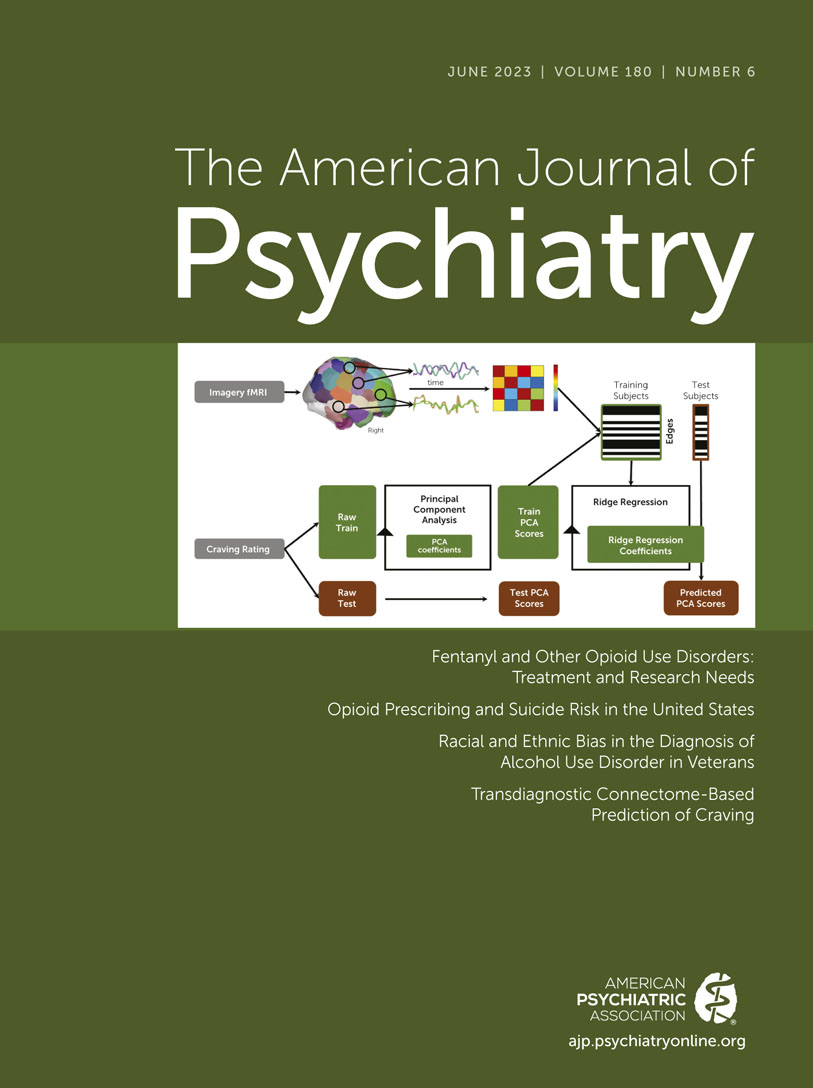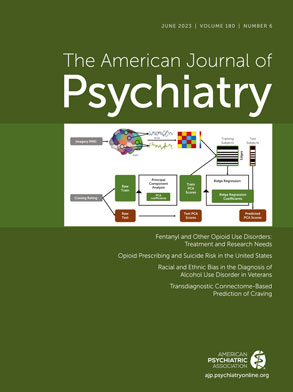Olfson and colleagues, reporting in this issue (
1), leveraged two robust national administrative data sets spanning 2009–2017 to examine associations between regional changes in key opioid prescribing indicators and regional total suicide deaths, as well as suicide deaths involving opioids. Thoughtful attention was given to the potential for sex and age differences. The study findings largely supported the authors’ hypothesis that the regions experiencing the greatest declines in the percentage of people filling opioid prescriptions (as well as declines in other indicators of higher-risk opioid prescribing) would also exhibit the greatest declines in total suicide deaths, as well as suicide deaths specifically involving opioids.
Data from the Centers for Disease Control and Prevention (
2) demonstrate that suicides significantly increased in 44 of 50 states between 1999 and 2016, although rates of increase were heterogeneous, depending on location and the demographic of focus. Concurrently, age-adjusted rates of U.S. drug-involved overdose deaths grew staggeringly from 6.1 per 100,000 to 21.6 per 100,000 (
3). Although there has been no shortage of data regarding increases in the prevalence of opioid-involved overdose, close examination of opioid-related overdose deaths in direct association with suicide is less common, with the literature tending to connect these dual public health epidemics via shared risk pathways, such as depression and opioid use disorder (
4–
6).
To this end, Olfson and colleagues previously (
7) evaluated trends in U.S. drug overdose deaths (2000–2017) involving opioids that were certified as unintentional, suicide, or of undetermined intent. The authors concluded that “while the public health crises of opioid overdose deaths and suicide do not appear closely linked, it is nevertheless possible that the national increase in suicides may be partly related to increasing opioid overdose deaths.” The examination of trends in deaths in all three categories is important to data interpretation because determining intent in overdose fatalities is fraught with challenges, as suicide notes are found in less than one-third of overdose deaths (
8). Data from the Nationwide Emergency Department Sample 2006–2011 show that 54% of opioid overdoses were classified as unintentional, 26.5% as intentional, and 20.0% as undetermined (
9). There is also evidence that intentionality of overdose may be dimensional rather than categorical, and retrospective reports suggest that sometimes intentionality of an overdose cannot be determined (
10). Although the percentage of opioid-related deaths that were certified as suicides declined from 9% to 4% over this time frame, the overall rate of opioid-related suicides increased, with overdose deaths attributable to heroin and fentanyl being the most likely contributors to the increases in overall rates of opioid-related intentional and unintentional deaths.
The present study is an innovative extension of this previous work that examines potential direct links between opioid-involved overdose and suicide by leveraging the notable declines in licit opioid prescriptions resulting from numerous public policies enacted across the United States with the intent of promoting more conservative opioid prescribing practices. The authors astutely frame reductions in availability of prescribed opioids as a public health approach to reducing access to lethal means of suicide. Interventions to reduce access to lethal means have been identified as an evidence-based suicide prevention strategy (
11).
Successful broad public health approaches to lethal means restriction worldwide have included efforts to reduce use of and secure toxic chemicals such as pesticides, implementation of firearm buyback programs, barrier placement at bridges and railway stations, and reduction of access to carbon monoxide (e.g., improving catalytic converters, switching from coal gas to natural gas) (
4). Lethal means counseling and safe storage education initiatives are also noted as important components of point-of-care suicide prevention strategies, although these more proximal interventions appear to be inconsistently implemented in frontline health care settings (
12,
13).
Olfson and colleagues’ consideration that public policy promoting conservative opioid prescribing may in fact be an ecological approach to reducing access to lethal means is both logical and serves to provide a mechanistic, although potentially oversimplified, explanation for the majority of their study results. Considered in this framework, the results of this study, particularly when combined with previous research regarding lethal means substitution, may serve to allay some concern that reductions in opioid prescribing are driving people to seek more lethal means of committing suicide (
4,
14).
However, as acknowledged by the authors, the mechanisms contributing to the observed relationships between opioid prescribing and suicide deaths are likely more diffuse and diverse than solely a reduction in access to lethal means. The association of opioid prescribing changes with suicide rates broadly (not just opioid-related overdose) hints at potential ecological and individual-level contributors to the study findings. For example, it is possible that regions or communities exhibiting greater declines in opioid prescribing also demonstrate higher uptake of a suite of interventions intended to reduce harms associated with opioid prescribing (e.g., provider opioid education, naloxone distribution, prescription drug monitoring program use). Indeed, the majority of Olfson and colleagues’ results are consistent with research suggesting that policies intended to promote conservative opioid prescribing are not broadly associated with detrimental unintended consequences and may enhance patient care by encouraging multimodal treatment plans and enhancing patient safety initiatives (
15,
16).
In the only exceptions to their overall pattern of findings, Olfson et al. found that three key opioid prescribing indicators (opioid prescriptions per capita, having any opioid prescription, and having three or more opioid prescribers) were negatively associated with unintentional opioid-related deaths among people in the 10- to 24-year and 25- to 44-year age groups.
Perhaps declines in opioid prescribing are not evenly distributed across all patients and may have disproportionately untoward impacts on certain groups, such as diminishing access to pain management interventional strategies, precipitating mental health crises, and promoting use of illicit opioids with higher potential for lethality (
17–
19). Given the robust and otherwise consistent findings of the Olfson et al. study, further exploration of the lone outlier—young and middle-aged adults’ rates of unintentional opioid overdose—seems a logical next step to inform efforts to mitigate any potential untoward impact of conservative prescribing efforts on this population.
Finally, efforts to curb opioid prescribing continue across the country. However, the landscapes of youth suicide and opioid-related overdose have shifted notably over the past 3 years (
19–
23). Replication of the present study as more recent data reflective of trends emerging during the COVID-19 pandemic become available would be helpful in benchmarking the impact of current community-level efforts to reduce opioid prescribing.

